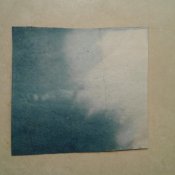fgorga
Member
I know that this topic (ie. the stability of coated, but unexposed cyanotype paper) comes up periodically, so here is another more-or-less random observation on the topic.
I just discovered (tucked into the pages of my cyanotype log book) a sheet of Stonehenge Warm paper that I coated with traditional cyanotype sensitizer on 15 Nov 2020 (i.e. about a month ago). This sheet of paper looks identical to paper I coated this morning.
I've tucked the sheet back into my log book to continue the "experiment" so I can't say how it would print, but I can't image that it would not work well.
I just discovered (tucked into the pages of my cyanotype log book) a sheet of Stonehenge Warm paper that I coated with traditional cyanotype sensitizer on 15 Nov 2020 (i.e. about a month ago). This sheet of paper looks identical to paper I coated this morning.
I've tucked the sheet back into my log book to continue the "experiment" so I can't say how it would print, but I can't image that it would not work well.











 Enjoying reading this thread.
Enjoying reading this thread.